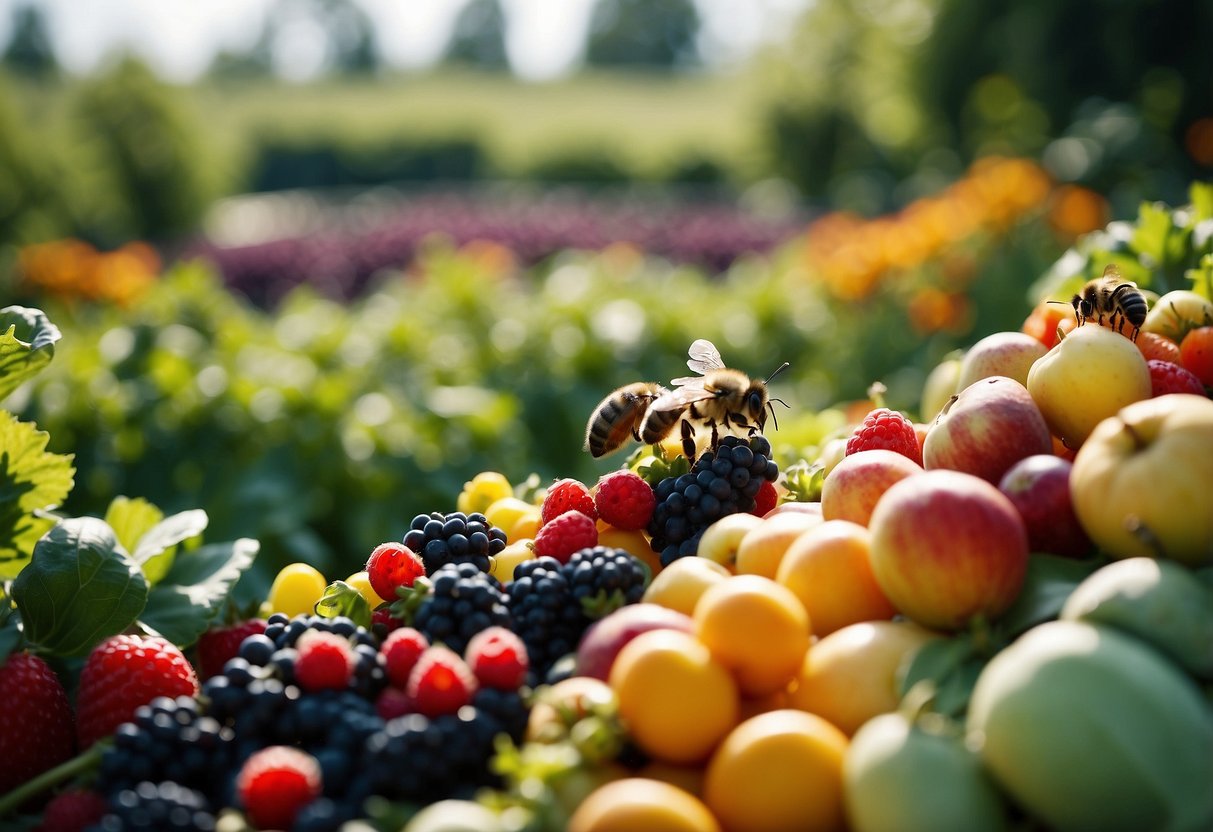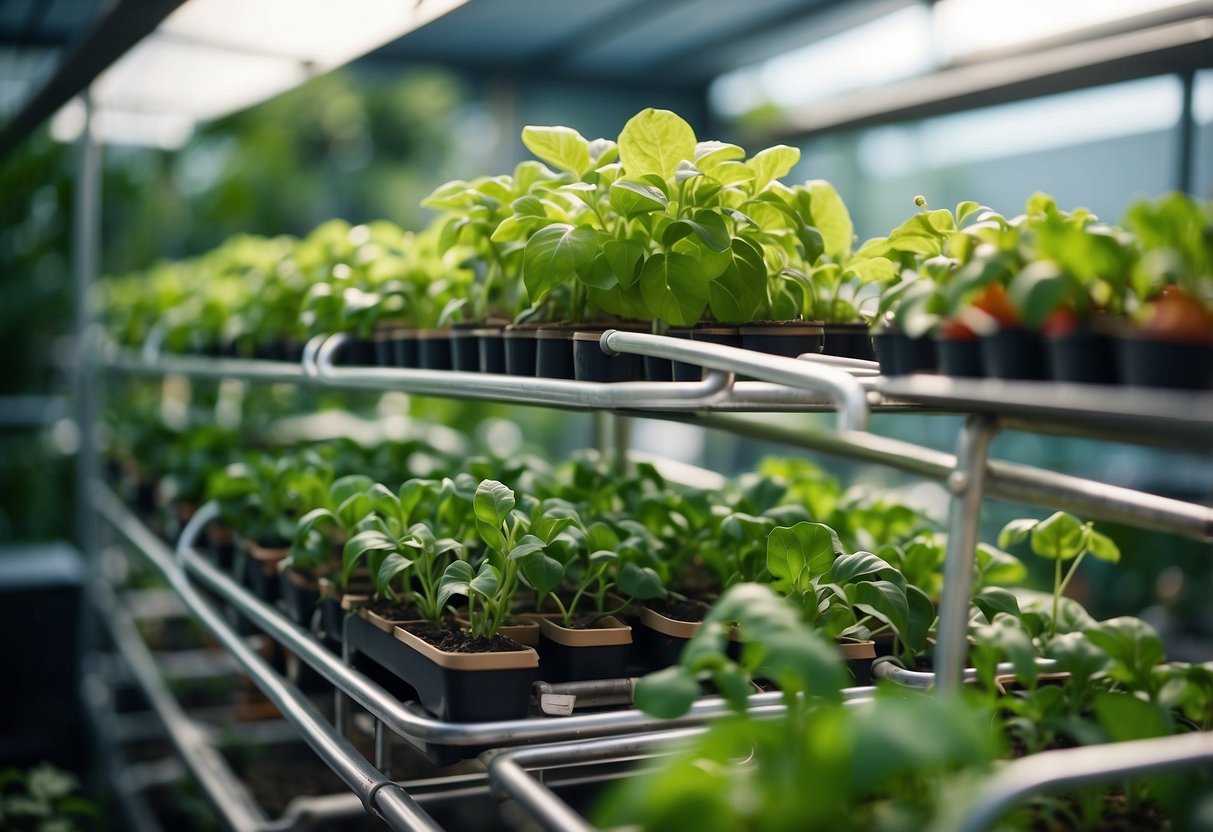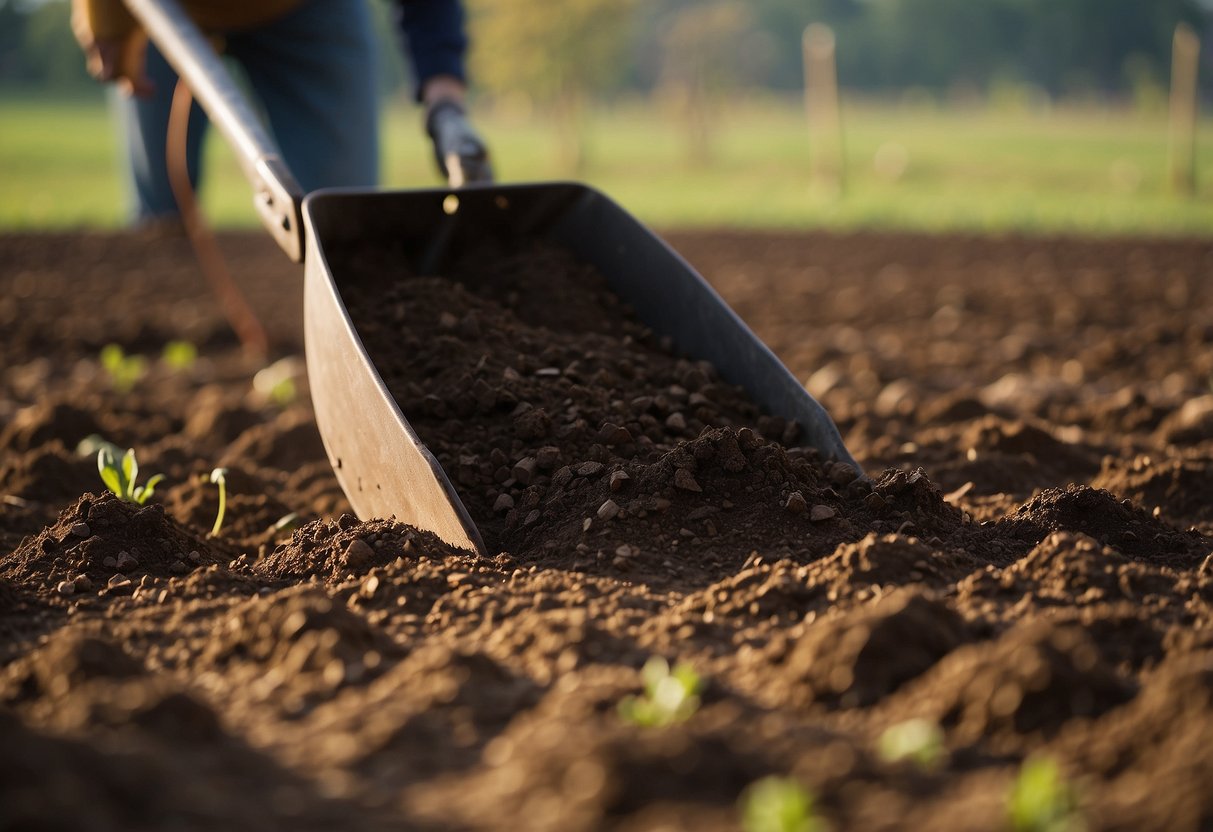Garden Ideas for Fruits and Vegetables: Easy Tips for a Bountiful Harvest
Gardening can be a fun and rewarding activity, especially when it comes to growing your own fruits and vegetables. Whether you have a large backyard or a small patio, there are plenty of creative garden ideas that can help you produce fresh, homegrown food right at your doorstep.

How can you make the most out of your space and bring your garden to life with vibrant greenery and produce? From raised beds to container gardening, there are numerous ways to tailor your garden to fit your needs and preferences. You’ll not only enjoy the fruits of your labor but also create a beautiful and functional outdoor space.
1) Raised Beds

Raised beds are perfect for growing fruits and vegetables. They make it easier to control soil quality and drainage.
In raised beds, you can plant vegetables like carrots and kale that thrive in loose, aerated soil. Crops like tomatoes and cucumbers love the warmer soil temperatures provided by raised beds.
Raised beds also help reduce weeds and pests. They keep your garden organized and make it easy to rotate crops. Plus, you don’t have to bend over as much, making gardening more comfortable for you.
2) Vertical Gardening

Vertical gardening is a fantastic way to grow vegetables and fruits in small spaces. You can use trellises, cages, or fences to support climbing plants.
Consider growing green beans, which can climb up to eight feet high. Peppers, another great choice, are not only easy to grow but also look beautiful when they start to fruit.
For more ideas, you can check out these 18 climbing vegetables that do well on a trellis.
3) Companion Planting

Companion planting means growing certain plants together to help them thrive. Some plants keep pests away or improve soil. For example, planting corn, beans, and squash together is a classic method.
Commonly known as the “three sisters”, corn provides support for beans, which fix nitrogen in the soil, while squash shades the ground. You can also mix flowers and herbs with your vegetables to attract beneficial insects and improve growth. For instance, planting tomatoes alongside basil can enhance the flavor of your tomatoes. This simple strategy can lead to a healthier and more productive garden.
4) Compost Teas

Compost teas are a great way to give your garden a nutrient boost. You can make them using simple materials like compost, water, and a few other ingredients.
Place a shovel full of compost in a pillowcase and tie it shut. Let it sit in a bucket of water for a few days.
Stir the mixture daily to help it brew. After a few days, remove the pillowcase and pour the tea around your plants. Be sure to use non-chlorinated water for the best results. This tea can help your fruits and vegetables thrive.
5) Permaculture Design

Permaculture design focuses on creating sustainable and self-sufficient gardens. It emphasizes working with nature rather than against it.
Observe your garden to understand the climate and soil quality. This helps you plan better.
Use plant stacking to maximize space. Grow ground cover plants, shrubs, and trees in layers.
Build raised garden beds. They help keep nutrients intact and make it easier to reach your plants.
6) Square Foot Gardening

Square foot gardening is a great way to maximize your gardening space. It involves dividing your garden into small, square sections.
Each square is usually 1 foot by 1 foot. This method is popular among urban gardeners who have limited space.
Planting in these small squares helps you grow different veggies and fruits more efficiently. You can find steps to start your garden at the Beginners Guide.
You’ll need flat ground that gets at least 6 to 8 hours of sun each day.
7) Aquaponics System

An aquaponics system lets you grow fruits and vegetables along with fish. You can set it up in small spaces like a balcony or porch.
Plants like tomatoes and peas thrive in this system. Tomatoes love the warm water and grow quickly, while peas need full sun and lots of nutrients.
The fish waste provides a natural fertilizer for your plants, making this method eco-friendly. Plus, it uses up to 90% less water than traditional gardening. This is great if you’re looking to conserve water and grow your own food.
8) Espaliered Fruit Trees

Espaliered fruit trees let you grow fruits in small spaces. This technique involves training trees to grow flat against a wall or fence. It’s perfect for gardens with limited room.
You can espalier fruit trees like apples, pears, and citrus. They add beauty and produce delicious fruit.
For instructions and patterns, Epic Gardening offers tips on cordon-style espalier. You can choose shapes like fans or candelabras. This method also enhances sunlight exposure and air circulation for your trees.
9) Greenhouse Growing

Growing fruits and vegetables in a greenhouse gives you control over the environment. This means you can plant crops that might not thrive outdoors due to weather or pests.
Some great veggies for a greenhouse include spinach, tomatoes, and cucumbers. You can also grow fruits like strawberries and peaches, which do well with the extra warmth and protection.
10) Pollinator Gardens

Pollinator gardens are a great way to attract birds, butterflies, bees, and other beneficial insects to your garden. These creatures help in pollinating your plants, which boosts fruit and vegetable yields.
Plants like Sweet Alyssum are excellent for attracting pollinators. It grows well in USDA zones 3 to 7 and thrives in container gardens, window boxes, and raised beds.
Another good option is Blue Vervain. It has small spikes of purple flowers that appear in summer and draw a variety of pollinators. It also serves as a host plant for certain butterfly larvae.
To enhance your garden, include a shallow dish or bird bath with stones. This provides bees a safe place to perch and access fresh water. A moist sand pan can also create a “puddling” area for butterflies.
Goldenrod is another must-have. Its yellow flowers support late-season pollinators like bees, butterflies, and moths. This native plant works well in many garden designs.
Creating a pollinator-friendly garden not only helps your fruits and vegetables thrive but also supports local wildlife.
Soil Preparation for Fruit and Vegetable Gardens

Preparing your soil is crucial for the success of your fruit and vegetable garden. You need to check the soil quality and add the right amendments to ensure healthy plant growth and good yields.
Assessing Soil Quality
First, examine the soil in your garden. Check for texture, pH, and nutrient levels. Ideal garden soil should be loamy, not too sandy or too clayey. Loamy soil holds moisture well but also drains properly.
Use a simple soil test kit to check the pH level. Most fruits and vegetables thrive in soil with a pH between 6.0 and 7.0. For more specific needs, like potatoes, which prefer a pH around 5.5, adjust accordingly.
Look for places where water collects, as this can indicate poor drainage. Healthy soil will have earthworms, which are a good sign of organic matter and natural aeration.
Amending the Soil
Once you’ve assessed your soil, it’s time to improve it. Start by removing any rocks, debris, and weeds. Clear grass from planting areas using a spade.
Add organic matter such as compost or aged manure. This provides nutrients and improves soil structure. Compost also enhances water retention and promotes beneficial microbial activity. You can spread compost evenly on the soil surface and mix it into the top 6-12 inches.
For targeted nutrient boosts, use fertilizers. Work them directly into the soil using a shovel or hoe. Alternate between raking and shoveling to blend amendments well. Mixing kitchen scraps and leaves into existing soil can also enrich it over time. Regularly checking and adjusting your soil will help maintain its quality for future planting.
Ideal Planting Times for Fruits and Vegetables

Planting times vary based on the season and the types of crops. Understanding when to plant ensures healthy growth and good yields.
Spring Planting Tips
For many vegetables, spring is the best time to plant. You can start seeds indoors for crops like tomatoes and peppers about 6-8 weeks before the last frost. Once the soil warms up, it’s safe to transplant seedlings outdoors. Root vegetables such as carrots and beets can be sown directly into the ground as soon as the soil is workable.
Cool-season crops like lettuce, spinach, and peas thrive in the cooler spring weather. Plant these early to take advantage of the mild temperatures. Herbs like basil and cilantro also do well when planted in spring.
Here’s a quick list of some common plants to start in spring:
- Tomatoes: Start seeds indoors 6-8 weeks before the last frost.
- Carrots: Sow directly into the ground in early spring.
- Lettuce: Plant seeds in early spring for cool weather growth.
Fall Planting Considerations
Fall is ideal for planting certain vegetables that prefer cooler temperatures. Crops like broccoli, cauliflower, and Brussels sprouts can be transplanted outside in mid-to-late summer for a fall harvest. Root vegetables such as turnips and radishes can also be sown in late summer for a fall crop.
Leafy greens like kale and collard greens thrive when planted in late summer or early fall. They can handle light frosts and often taste sweeter after a chilly night. Garlic is best planted in the fall, as it needs several months to develop its full flavor.
Here’s a quick list of some common plants for fall planting:
- Broccoli: Transplant seedlings in mid-to-late summer.
- Turnips: Sow seeds directly in late summer.
- Kale: Plant seeds in late summer or early fall.
Companion Planting Techniques

Companion planting is a technique where you grow certain plants together for mutual benefits. It helps improve plant health, boost yields, and reduce pests.
Shade and Support
Tall plants like corn can offer shade to crops like lettuce that don’t like too much sun. Corn can also act as support for plants that need trellising, such as beans.
Pest Control
Some plants repel pests naturally. For example, growing basil, marigold, and sweet alyssum near potatoes can help deter pests. Look up more plant combinations to keep your garden healthy.
Soil Fertility
Plants can improve soil health too. Beans and peas, for instance, can enrich the soil with nitrogen, benefiting nearby plants such as potatoes. This enriches the nutrient supply and helps with plant growth.
Compatibility
-
Good Matches:
- Tomatoes with basil and onions
- Potatoes with beans and cabbage
- Carrots with onions and leeks
-
Avoid Planting Together:
- Potatoes near cucumbers or pumpkins
- Tomatoes near corn
Quick Growing Plants
Quick-growing plants like radishes and lettuce can be sown between slower-growing crops like melons or winter squash. These will be harvested before the larger plants need more space.
Light Requirements
Leafy greens such as spinach and Swiss chard can thrive in the shadow of taller crops like corn. This way, you maximize your garden space efficiently.
Using these techniques can make your garden more productive and enjoyable. Experiment with different combinations and see what works best for your space and climate.







